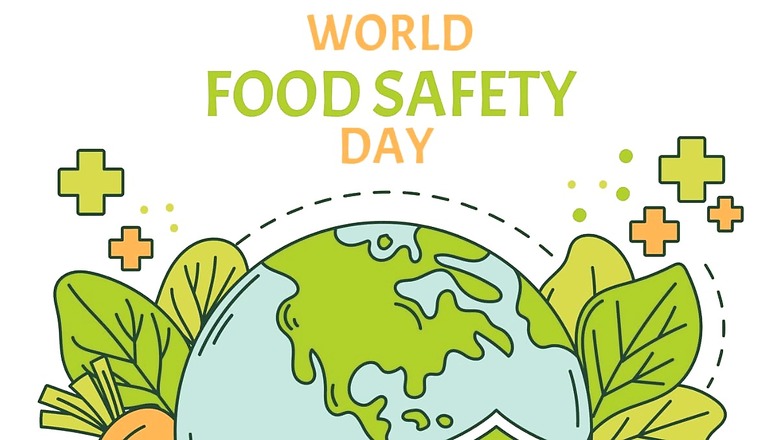
views
What does food safety mean to you – is it the same as eating healthy or is it more than that? Food Safety goes beyond healthy eating which requires you to monitor what you consume.
For food to be healthy, it also must be safe to eat. Food safety needs to be checked at every point from harvest to transport to processing to storage and finally during food preparation and storage by the consumers. Food Safety aims to prevent the contamination of food and reduce the risk of foodborne diseases.
Globally one out of ten people fall ill from eating contaminated food every year. Unsafe food has adverse effects on health and well-being as well as negative economic consequences for families and businesses also. Further, foodborne illnesses are more prevalent amongst the vulnerable group (the elderly, children under five and poor populations).
“Food Standards Save Lives” is announced as this year’s theme for the World Food Safety Day by the FAO which is celebrated every year on 7th June.
Dr. Meghana Pasi, Nutrition Consultant, MyThali Program, Arogya World shares the causes of food spoilage. It can happen due to several reasons:
- Buying poor quality food
- Not checking food labels
- Not refrigerating or freezing foods as per the need
- Refrigerator / freezer not working properly
- Chemical reactions – rancidity in fats, hydrogen swell
- Action of insects can damage and contaminate grains
- Microbiological action like mold on the bread or souring of milk
- Presence of contaminants in grains like stones, grit
- Natural enzymatic changes eg. over-ripening of fruits and vegetables
- Most importantly poor handling of food, not maintaining hygiene of cooking space, storage space and personal hygiene.
Dr Pasi discusses some important tips to keep your food safe at home:
- Keep a clean and sanitized kitchen – Use clean utensils and disinfect surfaces like kitchen slab and cleaning materials like scrubs and sinks.
- Maintain good personal hygiene:
- Wash hands with soap and water before cooking and while handling food as microorganisms are easily transferred from hands to food during meal preparation and consumption.
- Wear clean clothes. Use an apron while cooking. Keep nails trimmed. Cover cuts with bandages. Keep your hair tied.
- Wash fruits and veggies thoroughly under running water before cooking and eating.
- Keep food at safe temperatures: Bacteria that cause food poisoning multiply quickest in the “danger zone”– between 5°C and 60°C. Therefore, keep food below 5°C and above 60°C. Chill food promptly and properly.
- Always read the conditions of use and storage of packaged food.
- Keep raw and cooked food separate. Raw meat, poultry, seafood and eggs can spread illness-causing bacteria to ready-to-eat foods. Cutting boards or utensils used for raw meats must never be re-used for ready-to-eat foods like fruits and vegetables without thoroughly cleaning and sanitizing them. Another way to avoid cross-contamination is by using different knives and chopping boards for veg and non veg foods.
- Avoid buying meat that has discoloration and does not smell fresh. Do not buy from unhygienic places.
- Always buy firm fish and check that the eyes are crystal-clear, plump, wet, and shiny.
- When buying eggs check that the shell is not cracked. They may contain lots of bad bacteria.
- Always check the labelling (ingredients, use by date) of processed and packaged meat and poultry products.


















Comments
0 comment